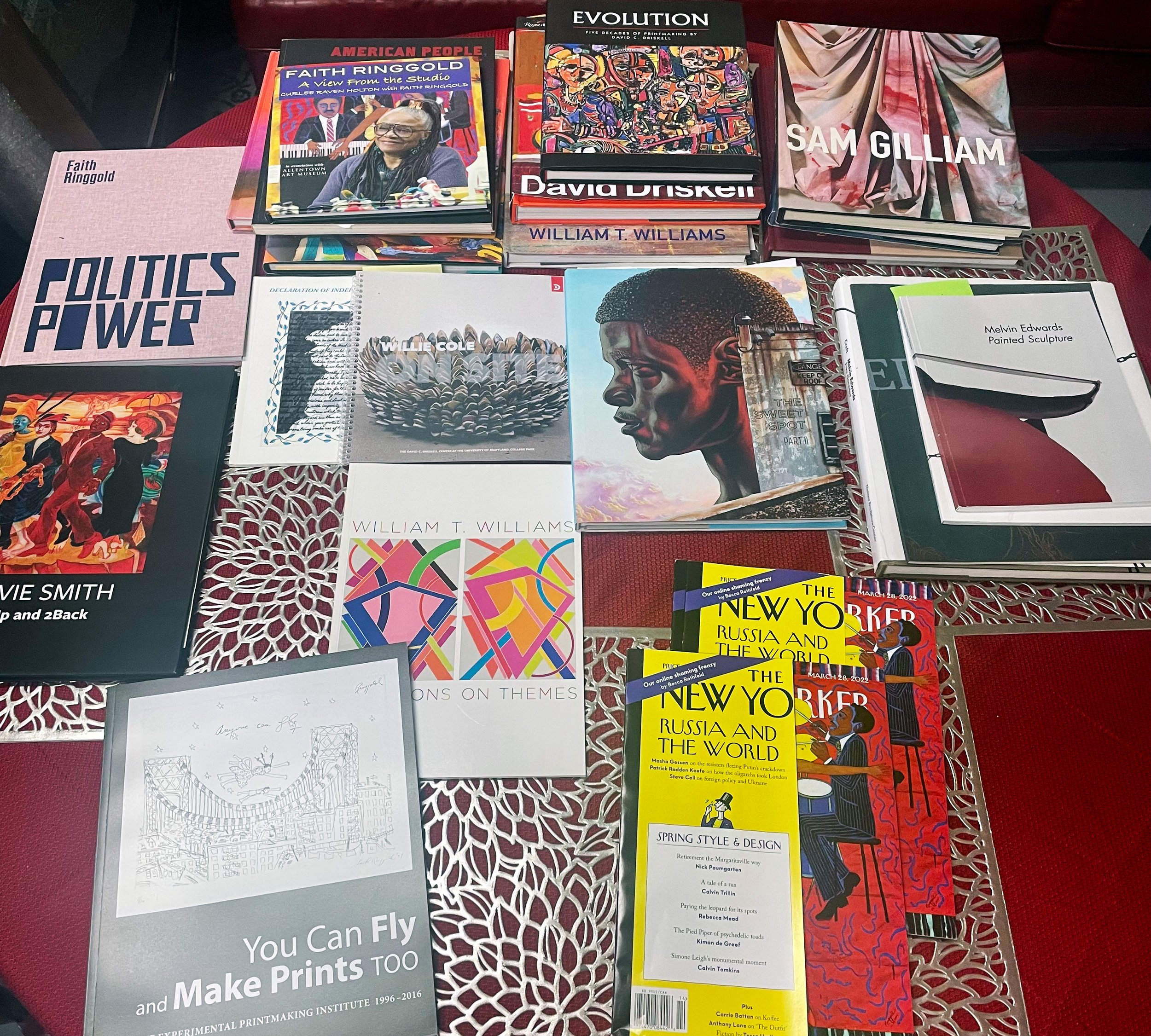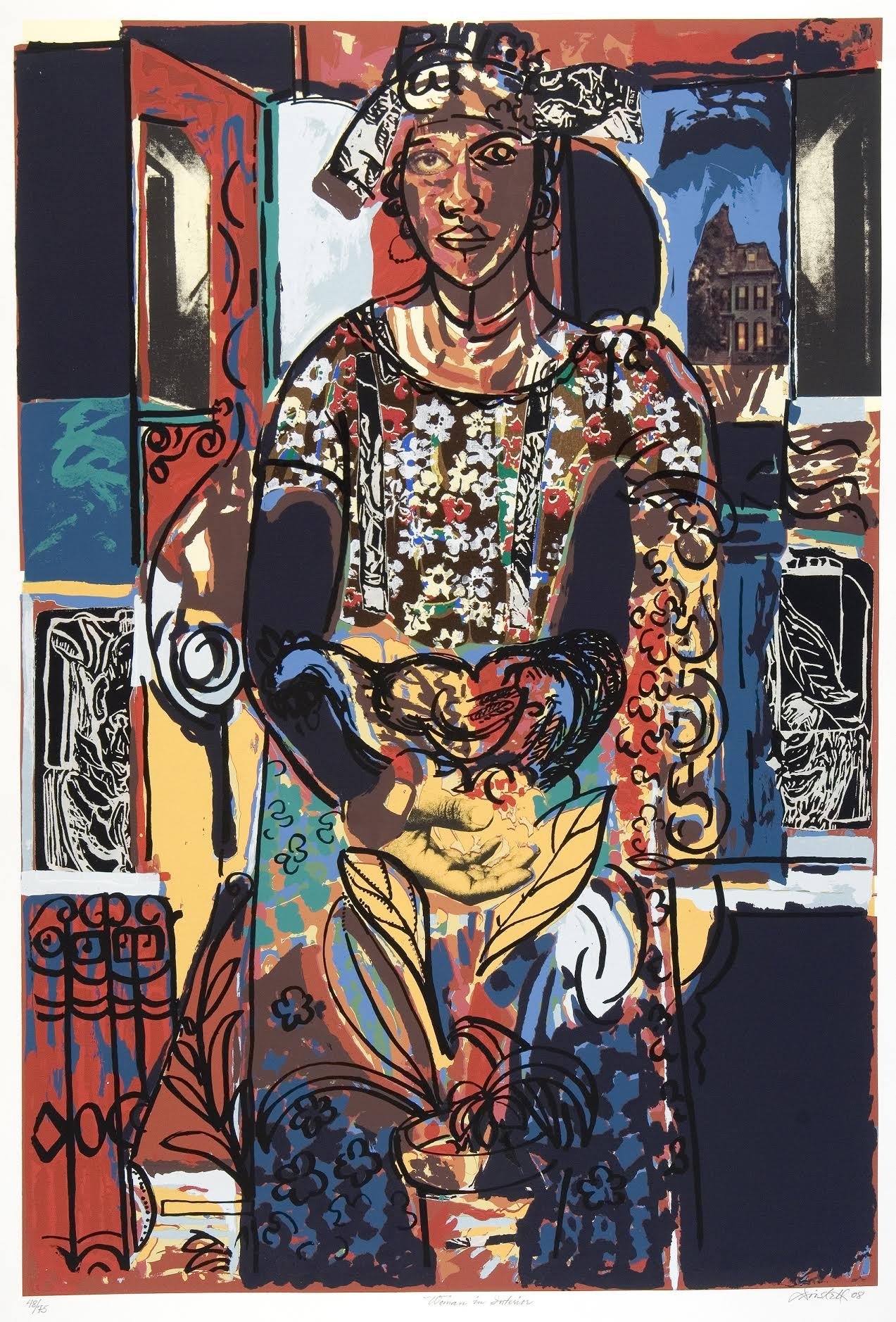Black History Month: Collecting Art from Black Artists
In honor of Black History Month, Raven Editions offers this feature of work by Black artists who are not as widely known or celebrated as some of their historical or contemporary peers. This list is meant to shine a light on artists who have prominence within institutions but are often excluded from mainstream conversations meant to amplify overlooked Black artists or canonize them as leading figures of art history. Of course, Sam Gilliam, David C. Driskell, and Richard Mayhew are well-deserved citations of the early Black artistry, but lesser known to that history, broadly speaking, are Melvin ‘Mel’ Edwards and Arvie Smith. While contemporary artists like Nelson Stevens, Allison Saar, and Faith Ringgold are the leaders of contemporary figurative painting and printmaking, the contributions of artists like Kevin Cole, Alfred Conteh, and Ifeatuanya ‘Ify’ Chiejina are not as widely discussed.
For centuries, Black artists have used their artist craft to both document and give voice to their lived experiences. The road to the recognition of the value of black art, however, has not been an easy one. For art to be recognized as worthy it must have champions, such as collectors, who propel it forward to be granted entrance into the canon. It has taken decades of dedication– where collectors and artists alike advocated for the presentation of black art in the community, in their homes, in exhibitions, and in museums–to get to where we are today. Blackness, in the fullest sense of the word, has a seemingly unlimited usefulness in the history of modern art.
Regardless of the theme—from slavery through the cultural boom of the Harlem Renaissance to the Civil Rights Movement and whether filled with narratives on injustice, strength, resistance, or resilience– art by black artists brings to light a cultural and political discourse that is imperative to both humanity and history. Today, collecting work by black artists is more critical than ever whether it be work from renowned established artists like that of Faith Ringgold, David C. Driskell, and Arvie Smith, to newer works from contemporary artists like Ifeatuanya ‘Ify’ Chiejina. We encourage every collector, new or experienced, to include works in their collection that share a story and make it a part of their own unique history.
“Collecting the work of black artists serves two purposes: on the surface, it encourages and helps sustain the practitioner in their journey to physically document and respond to their lived experience. More so, these art objects become valuable, not only monetarily, but in their ability to be the physical manifestation of a space and time in history. These works are a living record and embodiment of a person's life. Collecting these works help us question how these artists’ not only reconciled these experiences but transcended them.” - Quote from founder Curlee Raven Holton
Select Works by Prominent Artists
Mason Archie's Guide Me Home
Mason Archie is considered one of the foremost contemporary oil painters of his generation, often working in the traditional old master style of painting, reminiscent of a 19th-century painter. Best known for his landscapes, Archie’s work blends impressionism and realism with a more vibrant and contemporary palate. Archie’s enchanting images encourage viewers to think about this “brilliant light,” the way it glows, its warmth, and its reflection. Our recent collaborations with Archie were influenced by the history of quilts as mnemonic devices for guiding enslaved people to freedom along the Underground Railroad.
Alfred Conteh's Terrence
Alfred Conteh is a classically trained painter and sculptor. His work spans a range of mediums and materials and is grounded in figuration and abstraction. Conteh’s work makes use of lyricism and natural forms while evoking architectonic structures that reference built human environments. As an African American artist, Conteh sheds light on the realities of African American people, bringing their stories and experiences to the forefront. Conteh explores disparities against African American communities with images of members of the African diaspora placed in what are often mundane environments. Grounded in the figurative, his work depicts complex individuals that convey a collective representation of being Black in America.
Kevin Cole's Along Colored Lines
Kevin Cole is an African-American mixed media artist and educator based in Atlanta, GA. Cole’s artwork is well known for incorporating patterns and textures from traditional African cloths to speak to human conditions and behaviors. His work often explores the interplay between color and music and is particularly influenced by the musical art forms birthed by African American culture: such as jazz, blues, rap, and gospel. This new series of work continue Cole's exploration into themes of Gerrymandering and the historical and contemporary tactics and policies that disenfranchise Black American voters.
David C. Driskell’s Woman in Interior
Born in 1931 in Eatonton, Georgia, David C. Driskell grew up in North Carolina and completed the art program at Skowhegan School of Painting and Sculpture in Maine in 1953. He received an undergraduate degree in art from Howard University in 1955 and an M.F.A. from The Catholic University of America in 1962. He then explored postgraduate study in art history at The Netherlands Institute for the History of Art in The Hague. Trained as a painter and art historian, Driskell worked primarily in collage and mixed media and printmaking. He maintained an active career as a practicing artist, teacher, curator, collector, art administrator, and art consultant. He lectured across the globe and his works are included in major collections of art museums throughout the world.
MElVIN EDWARDS’ TRANSCENDENCE
Melvin “Mel” Edwards is a contemporary artist, teacher, and abstract steel metal sculptor living and working in New York and Dakar, Senegal. As a pioneer of contemporary African-American art, Edwards is celebrated for his sculptures and three-dimensional installations made from barbed wire, welded steel, chain, and other machinery parts. His work is categorized by his ability to create a visual language of modern sculpture while engaging with the history of abstraction. Edwards’ artwork is rife with social and political turmoil, often referencing African American history and artifacts and exploring themes of slavery, protest, and social injustice.
Michael C. Gibson's Crowned in Her Glory
Michael C. Gibson’s work can best be described as photo-realistic. He has a meticulous eye for detail, pushing the limits of realism and using graphite to capture unseen thoughts, feelings, and emotions. Gibson’s art is full of points of introspection and reflection, often taking inspiration from everyday encounters of black life, drawing parallels with various African peoples and experiences. Crowned in Her Glory is our first collaboration with the artist. This print speaks to the spirit of black culture, highlighting black experiences and pushing back against the stereotype of black women.
Summation, 2013, silkscreen, 32 x 44 in (cropped)
Richard Mayhew's Summation
Richard Mayhew is well-known for his vibrant, emotionally evocative landscape paintings. Mayhew’s creative process is gestural, facilitated by pouring paint onto a canvas and working it into lush fields of color. Each color is intentionally suggestive, depicting an emotional interpretation of desire, hope, fear, love, and other emotions that Mayhew feels as he creates. Mayhew was a member of the Black Emergency Cultural Coalition and the legendary artist group, Spiral, a New York-based collective of African-American artists formed in the 1960s. His work is represented in collections, including the Metropolitan Museum of Art, the Whitney Museum of American Art, the Brooklyn Museum, and the National Gallery of Art in Washington, D.C.
ARVIE SMITH’S HANDS UP, DoN’T Shoot
Arvie Smith is a nationally recognized artist who reflects on the complexities of the history of racial and social injustices committed toward African Americans. His work aims to debunk negative stereotypes and act as a dialogue about the inequality and marginalization of Black people in America. Smith is known for his striking figurative, expressionist style, with a palette dominated by bright reds, orange-yellows, browns, and blacks, colors that remind him of his grandmother’s quits. Filling large, ambitious canvases with figurative compositions, glowing colors, and flowing brushstrokes that reveal a baroque sensibility. Smith’s work is deeply influenced by his childhood in the Jim Crow South, covering subjects such as African ancestry, slavery, the KKK, interracial relationships, and stereotypes like Aunt Jemima.
Nelson Steven's Primal Force
Nelson Stevens was a Brooklyn-native artist and retired educator in Owings Mills, Maryland. Stevens’ work is focused on the empowerment of Black communities through visual representation, often depicting iconic aspects of African American culture, style, and leaders. One of Stevens’ earliest childhood memories was of drawing in chalk on the sidewalk in front of his home. Stevens became a leading figure in the Black Arts Movement of the 1960s and 70s, known for his brightly-hued paintings and drawings of influential African American figures in bold colors arranged in blocky lines and patterns. Later, he became a founding member of the Chicago-based African Commune of Bad Relevant Artists (AfriCOBRA) in 1969.












